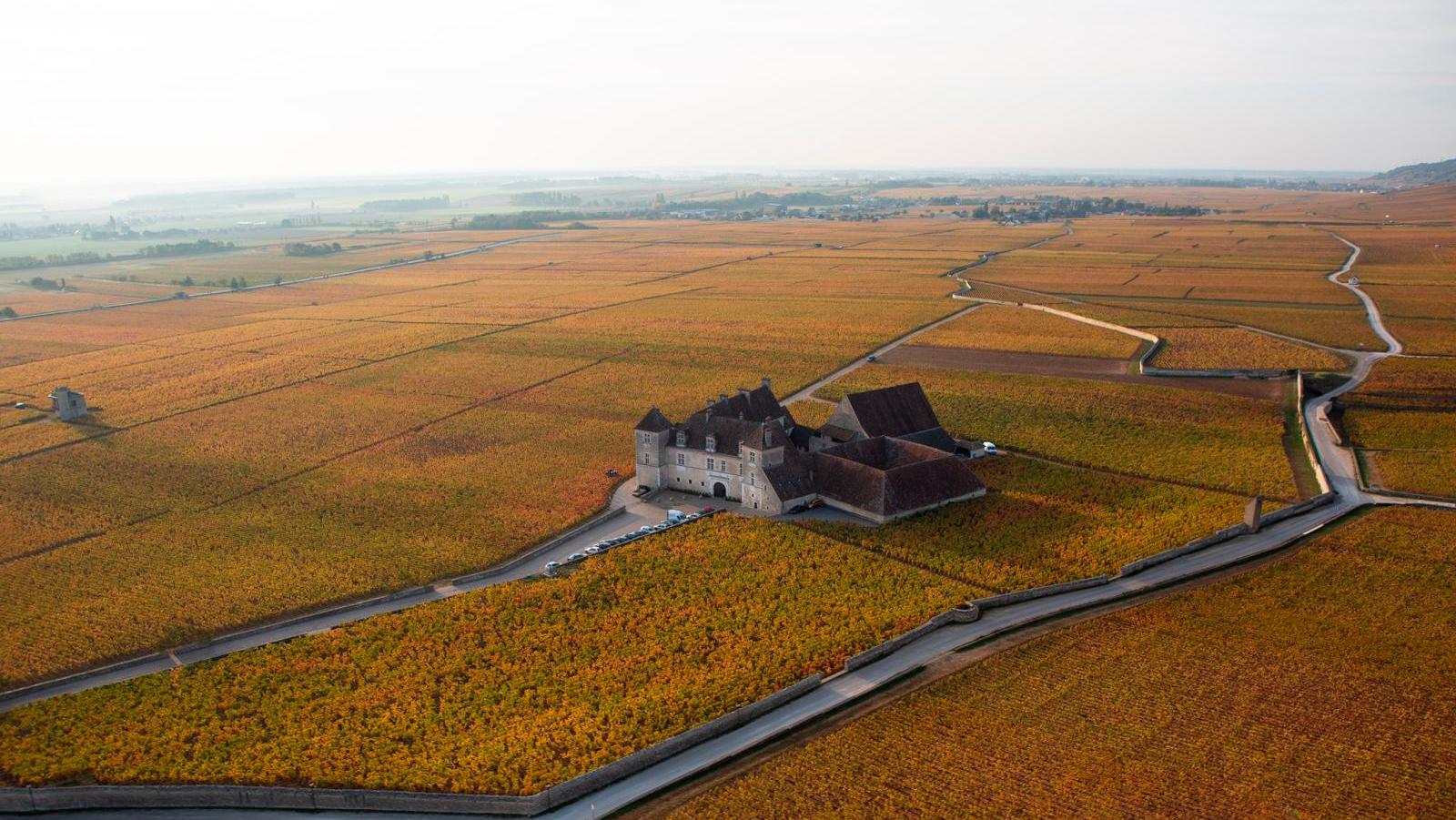Listed as a historic monument in 1949 and open to the public all year round, for nearly a thousand years the Château du Clos de Vougeot has been a symbol of history and culture in Burgundy, even if it no longer produces wine.
The Château du Clos de Vougeot is never more stunning than in autumn when the surrounding vineyards are decked out in crimson and gold. In the middle of fifty hectares (123.5 acres), enclosed by a three-kilometer-long wall, its silhouette stands out in all its authentic majesty. During the medieval period, Cistercian monks and wine-producing land went together, and abbeys acquired huge cellars. As nature always does things right, Burgundy was both home to the religious order and excellent wine-growing territory. But when the Cistercian abbey of Cîteaux was given some "uncultivated, even overgrown land" in 1110, and half a century later, the Benedictine monks of Vergy sold the abbey their age-old rights over their vineyards, no-one would have guessed that the long, long history of Le Clos de Vougeot had only just begun. The monks, who lived by the ascetic rule of St Benedict, turned into land-clearers, builders and winemakers. They extracted stones from the former Vougeot quarry for the farm buildings, and cut down oaks in the flourishing Morvan forest for the frames. It all began as a spacious, semi-underground cellar, which expanded…
com.dsi.gazette.Article : 18633
This article is for subscribers only
You still have 85% left to read.
